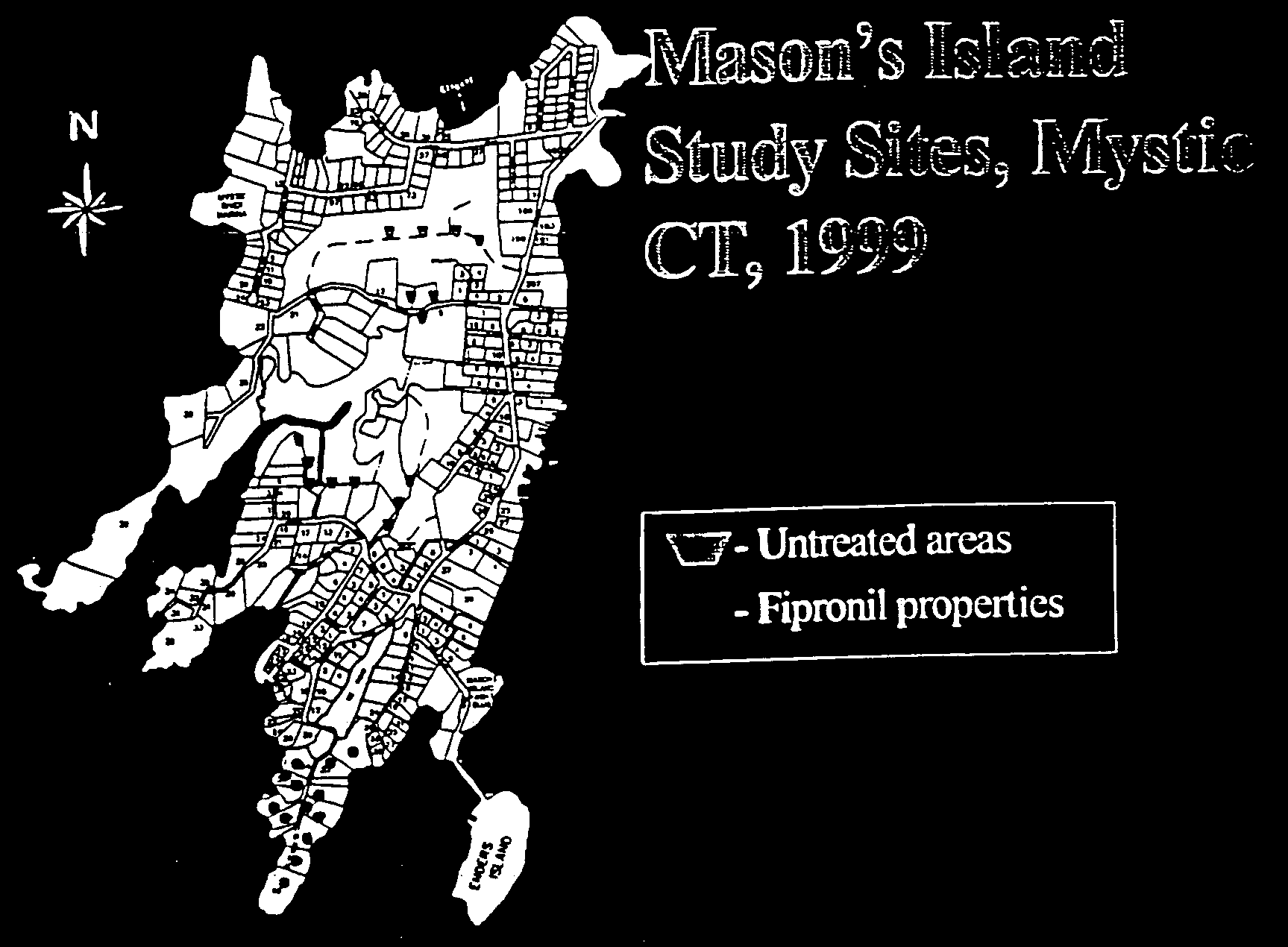Control of arthropod vectors of parasitic diseases
a parasitic disease and arthropod technology, applied in the field of controlling ectoparasitic vectors of diseases, can solve the problems of increasing the risk of lyme disease, and less likely than the nymphs to have sufficient time to transmit the infection, so as to prevent the transmission of diseases
- Summary
- Abstract
- Description
- Claims
- Application Information
AI Technical Summary
Benefits of technology
Problems solved by technology
Method used
Image
Examples
example 1
[0091]A field trial was conducted from April to September, 1999 on Mason's Island, Mystic, Conn. FIG. 1 shows that the fipronil treatment area consisted of 13 contiguous residences with a total area of 9.88 acres (about 4 hectares). Four sites situated in undeveloped natural areas were used as untreated controls.
[0092]Modified Protecta Jr. (Bell Laboratories, Madison, Wis.) mouse bait boxes (FIG. 2) were used in this study. The modifications were as follows: a cotton yarn wick was stapled to the underside of the lid just in front of the feeding area entry; two adsorbent nylon strips were affixed to the outer edges of the food block trays. Two Detex monitoring blocks (Bell Laboratories, Madison, Wis.) were placed in each box, 2–3 ml of fipronil topical formulation was applied to the wick and adsorbent strips with a squirt bottle, and the lid was closed and locked with a set screw prior to placement on properties. A 0.43% w / w formulation of fipronil was used in May and June and this w...
example 2
[0108]A field trial testing fipronil (FRONT LINE TOP SPOT®) on native rodent-associated ticks was conducted in a Rocky Mountains foothills habitat in Larimer County, Colo. Treated and untreated plots consisted of 35 rat dens within 5 hectares each. A mark-release-capture study with Neotoma mexicana began in April, and captured rats were anesthetized and ticks removed, identified and quantified. The principal tick on N. mexicana is I. spinipalpis, a nidicolous, competent vector in enzootic transmission cycles in Colorado, California and Oregon. Pretreatment tick infestation rates (>76%) and abundance (>5.35 / rat) were comparable in both treated and untreated plots. Fipronil was passively applied to rats as they entered and exited modified commercially available bait boxes as described in Example 1. Treated bait boxes were set out in May, left in place, and retreated and rebaited at four-week intervals through August. Collections were made at 1, 4, 8, 12 and 16 weeks post-application. ...
PUM
| Property | Measurement | Unit |
|---|---|---|
| distance | aaaaa | aaaaa |
| distance | aaaaa | aaaaa |
| size | aaaaa | aaaaa |
Abstract
Description
Claims
Application Information
 Login to View More
Login to View More - R&D
- Intellectual Property
- Life Sciences
- Materials
- Tech Scout
- Unparalleled Data Quality
- Higher Quality Content
- 60% Fewer Hallucinations
Browse by: Latest US Patents, China's latest patents, Technical Efficacy Thesaurus, Application Domain, Technology Topic, Popular Technical Reports.
© 2025 PatSnap. All rights reserved.Legal|Privacy policy|Modern Slavery Act Transparency Statement|Sitemap|About US| Contact US: help@patsnap.com



